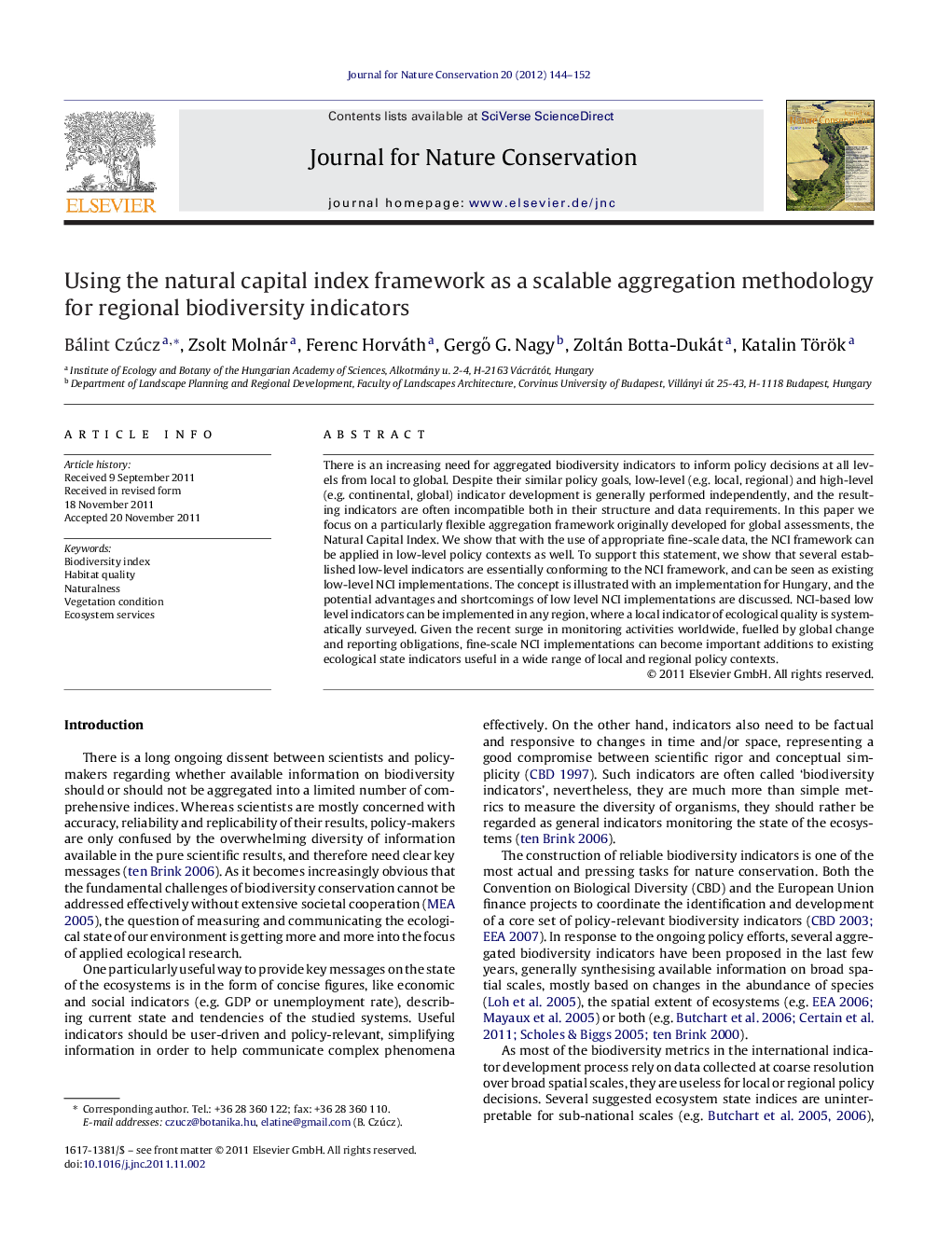| Article ID | Journal | Published Year | Pages | File Type |
|---|---|---|---|---|
| 4399984 | Journal for Nature Conservation | 2012 | 9 Pages |
There is an increasing need for aggregated biodiversity indicators to inform policy decisions at all levels from local to global. Despite their similar policy goals, low-level (e.g. local, regional) and high-level (e.g. continental, global) indicator development is generally performed independently, and the resulting indicators are often incompatible both in their structure and data requirements. In this paper we focus on a particularly flexible aggregation framework originally developed for global assessments, the Natural Capital Index. We show that with the use of appropriate fine-scale data, the NCI framework can be applied in low-level policy contexts as well. To support this statement, we show that several established low-level indicators are essentially conforming to the NCI framework, and can be seen as existing low-level NCI implementations. The concept is illustrated with an implementation for Hungary, and the potential advantages and shortcomings of low level NCI implementations are discussed. NCI-based low level indicators can be implemented in any region, where a local indicator of ecological quality is systematically surveyed. Given the recent surge in monitoring activities worldwide, fuelled by global change and reporting obligations, fine-scale NCI implementations can become important additions to existing ecological state indicators useful in a wide range of local and regional policy contexts.
